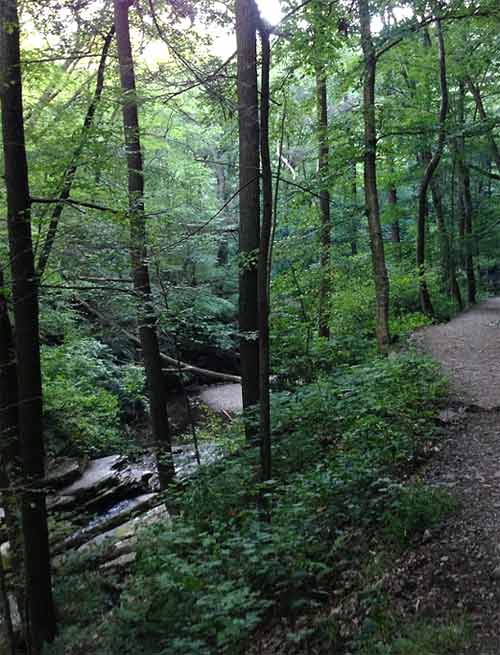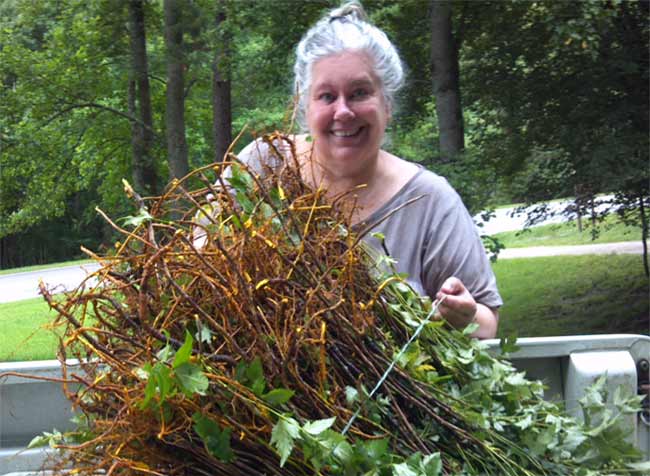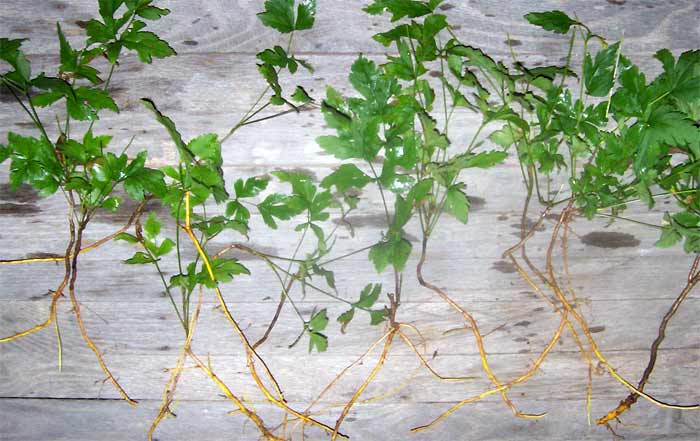Hunting wild yellowroot (Xanthorhiza simplicissima)

Finding wild yellowroot in the Appalachian mountains
Where to find Xanthorhiza simplicissima, better known as yellowroot
Yellowroot is found in a variety of habitats, but it prefers moist, well-drained soil. It is often found along stream banks, in flood plains, and in other areas with consistently moist soil. The plant can also be found in dry woodlands, but it is less common in these habitats.
Yellowroot is not a rare plant, but it can be hard to find. The plant is declining in some areas due to habitat loss. However, yellowroot is still relatively plentiful in most parts of the eastern United States.
If you are looking for yellowroot, the best place to start is in moist woodland. Look for the plant along creek banks or in other areas with consistently moist soil. Yellowroot can also be found in old fields that are reverting to woodland.
The plant is often found in colonies, so once you find one plant, you are likely to find others nearby. In some places, yellowroot is growing as far as the eye can see!
If you are interested in learning more about yellowroot, I encourage you to do some research on the plant.
Visit my main yellowroot page to learn the medicinal uses for yellowroot, how to prepare it, and to purchase bundles of yellowroot for making tea.
See this page to purchase yellowroot chips.
Read about growing your own yellowroot here.

Tips for finding yellowroot
- Look for the plant in the spring and fall, when the leaves are more visible.
- The plant can be more difficult to see in the summer, when the leaves are green and the plant is surrounded by other vegetation.
- If you are not sure if you have found yellowroot, compare the plant to pictures of the plant online or in a field guide.
- Scrape the stem with your thumbnail and look for a bright yellow color.
- Be sure to ask permission from the landowner before collecting yellowroot from a wild area.
When to harvest yellowroot
The best time to harvest yellowroot is in the fall, after the leaves have died back. This is when the roots are at their largest and contain the most medicinal properties. However, yellowroot can be harvested year-round.
Roots, stems, and bark are used to make yellowroot tea. The leaves are usually discarded.
Hunting for wild yellowroot
Hunting for wild yellowroot can be a rewarding experience. It is a challenging plant to find, but it is also a valuable one.
If you are interested in hunting for wild yellowroot, be sure to do your research and follow the proper precautions.
- Keep an eye out for copperheads and rattlesnakes.
- Do not reach into dense foliage without checking for spiders, snakes, and other critters.
- Carry a bee sting kit if you are allergic to bee stings.
- Dab lavender essential oil on socks, shoes, and pants. This will help repel chiggers, mosquitoes and biting flies.
- If you see a bear, do not get between momma and her babies.

Tips
for hunting for wild yellowroot in the Appalachian Mountains
- Start your search in areas where yellowroot is known to grow.
- Harvest only what you need.
- Leave some plants behind so that they can reproduce.
With a little patience and effort, you can find wild yellowroot in the Appalachian Mountains. This valuable medicinal plant can be used to treat a variety of health problems, and it is a great way to connect with nature.
Yellowroot is a sustainable plant.
I don't think we have to worry about over-harvesting yellowroot around here! Even if you pull up all you can carry, it will grow back from pieces of rhizomes that break off in the ground.
Here in the Southern Appalachian Mountains, yellowroot is plentiful. If the day comes when yellowroot is disappearing from the forests, I will be sure to report it on here!
Sources:
https://specialtyproduce.com/produce/Foraged_Yellow_Root_14015.php
Blessings to you and yours!
Thanks so much for reading my blog. Jan.

*Note - the information on this website has not been evaluated by the Food and Drug Administration.
© 2005-2024 website design and content by Janice Boling